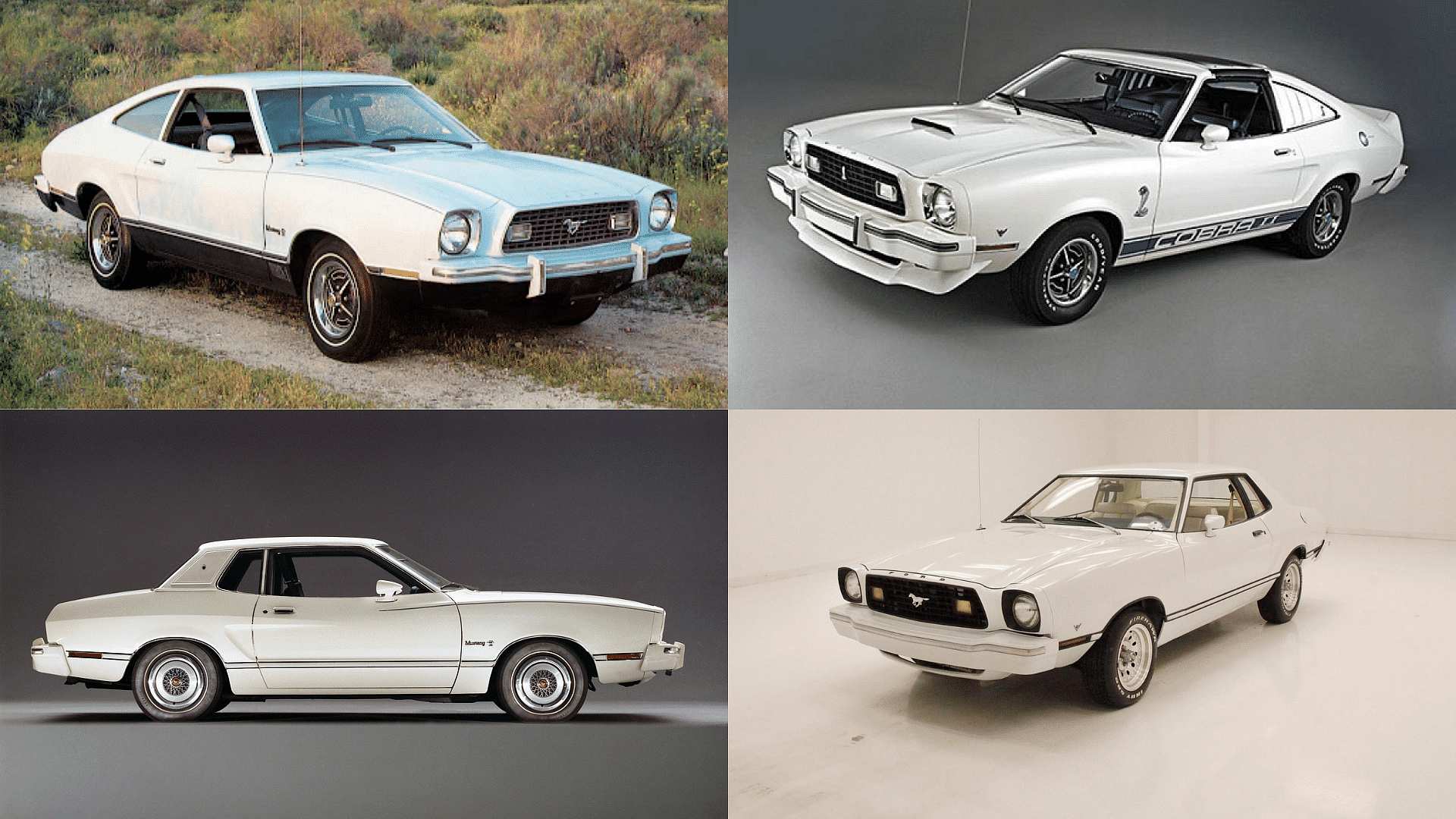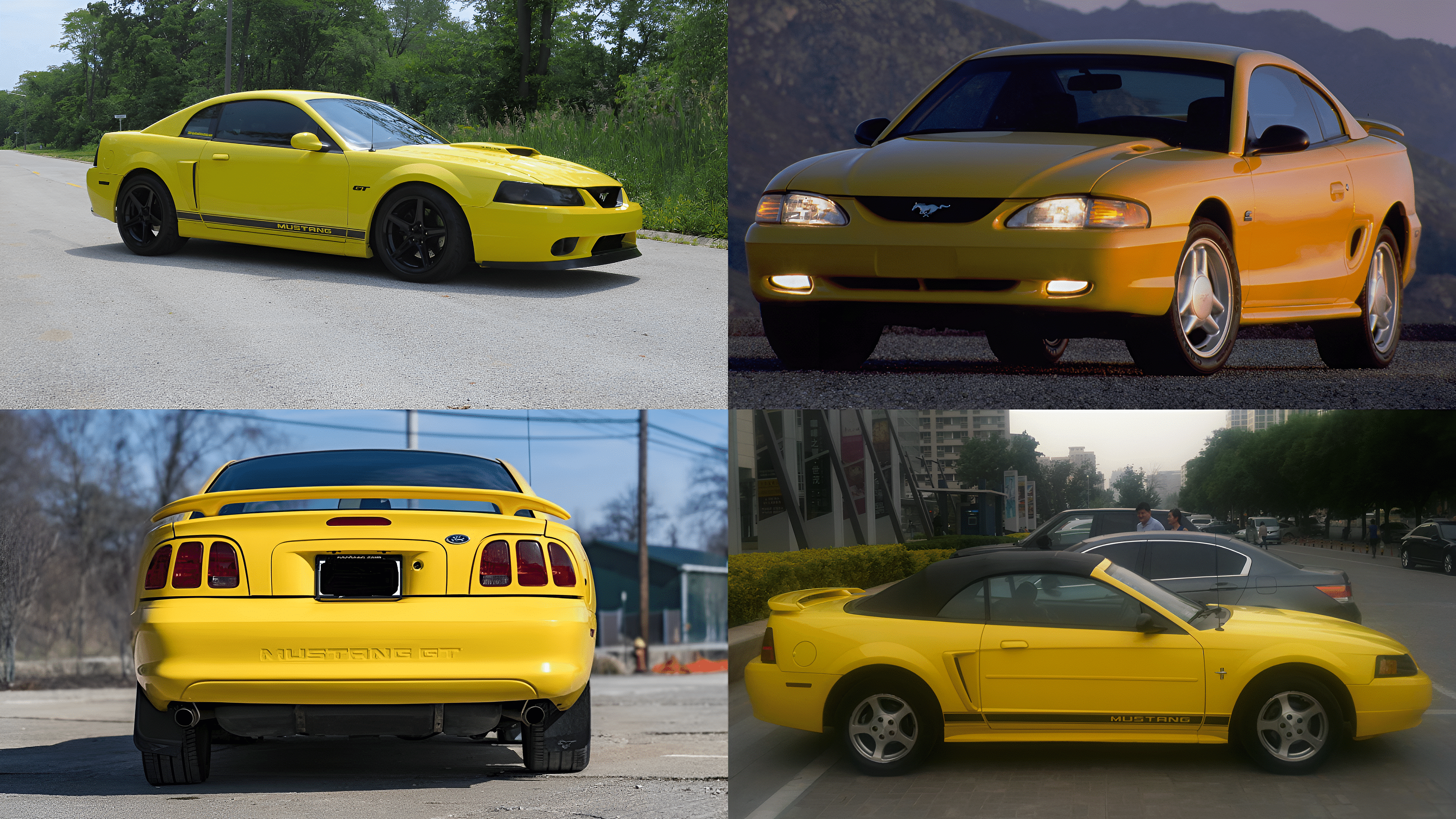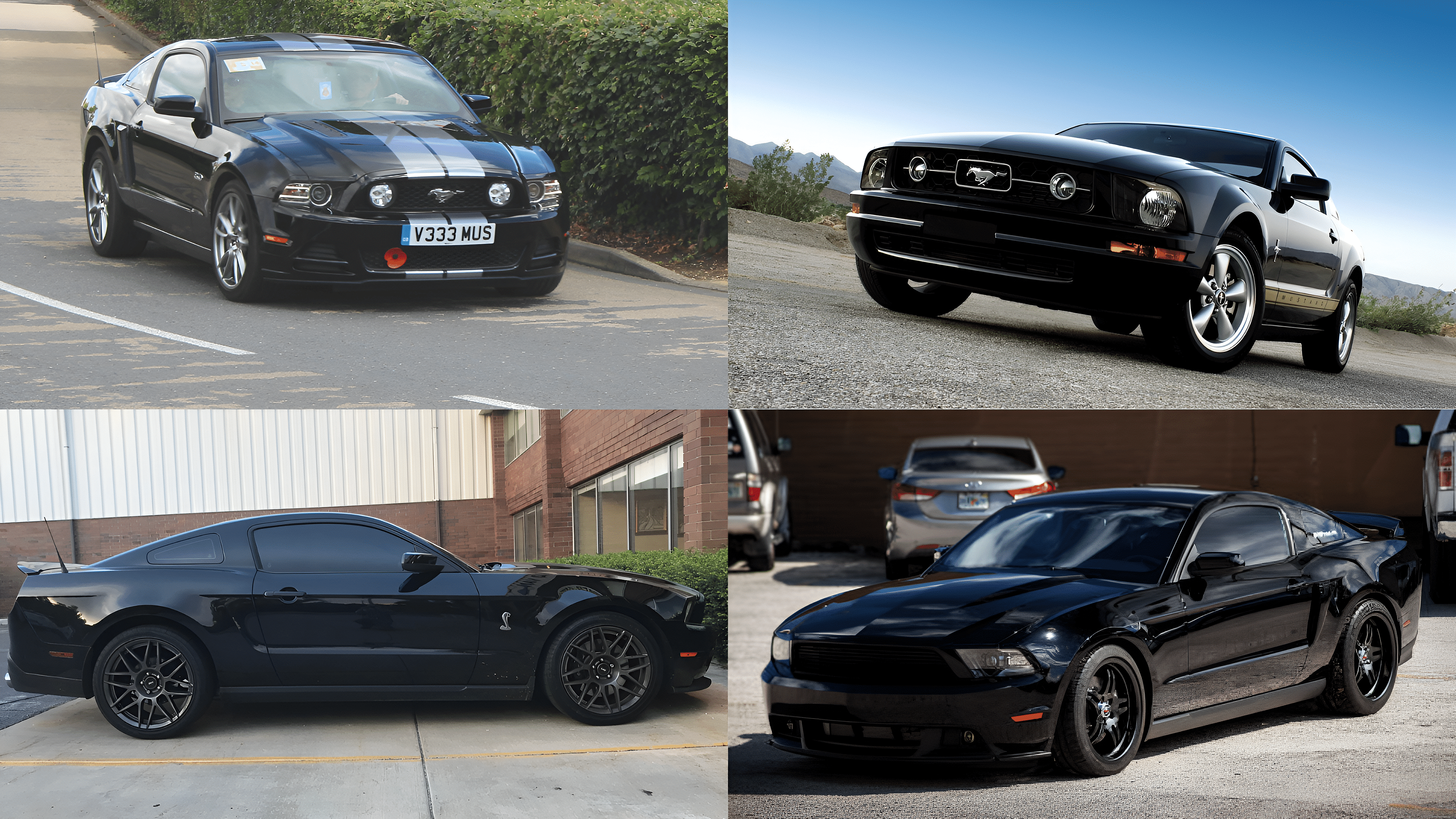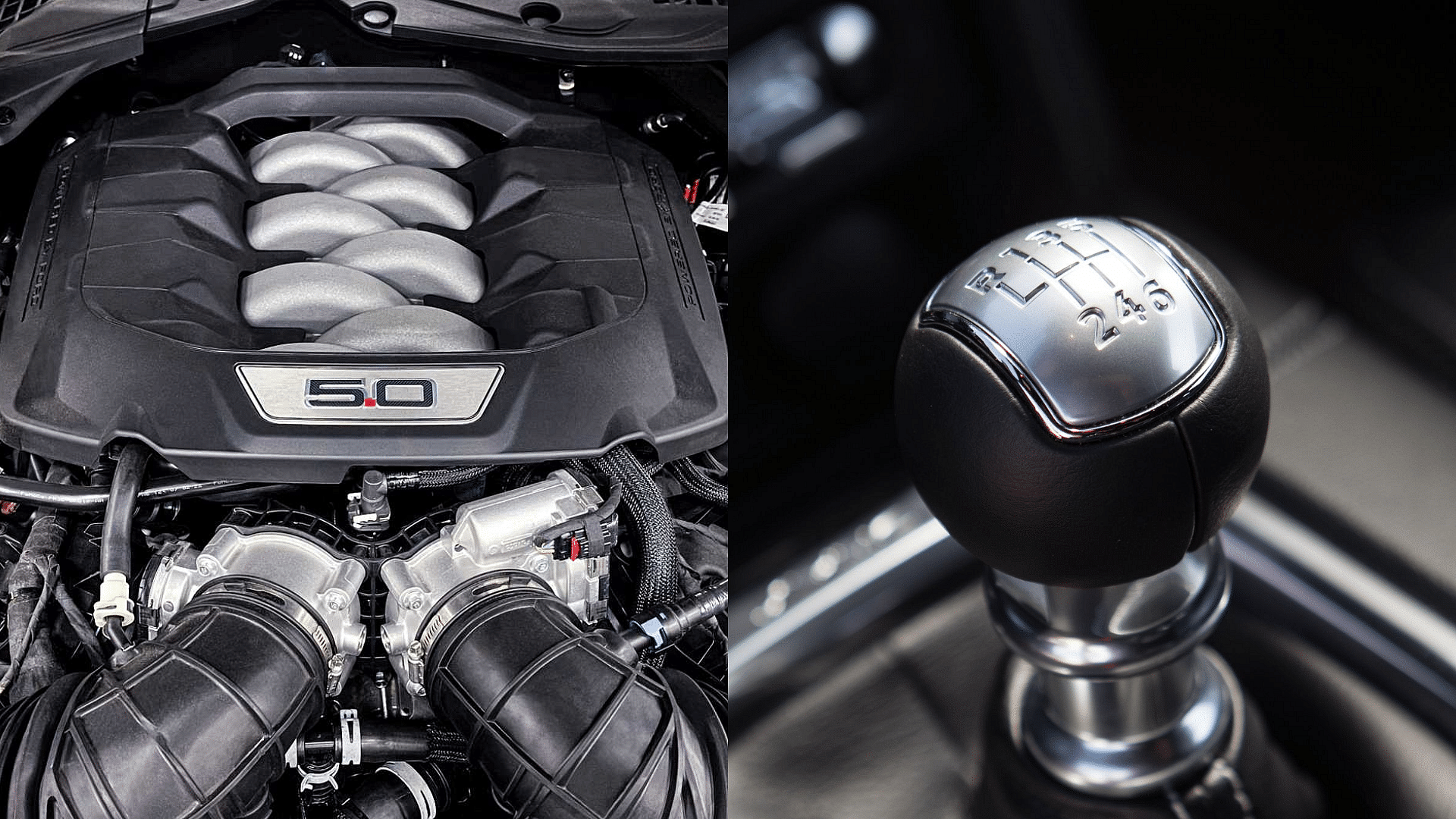The Remarkable Evolution Of The Ford Mustang
The journey of the Ford Mustang, spanning from its humble beginnings to the modern era, stands as a testament to the extraordinary evolution of an American automotive icon. Check out the evolution of Ford Mustang over every generation since its inception in the 60s.
Published August 1, 2024

The Ford Mustang, a quintessential American muscle car, has evolved remarkably since its debut in the 1960s. With its distinctive design, powerful engines, and a storied history, the Mustang has captured the hearts of automotive enthusiasts worldwide. In this article, we will journey through time to explore the iconic evolution of the Ford Mustang.
1. The Birth of an Icon (1964-1966)
The Ford Mustang burst onto the automotive scene in 1964 as a 1965 model, ushering in a new era for affordable and stylish performance cars. Its sleek, sporty design, long hood, and short rear deck appealed to a wide range of buyers. The Mustang offered various engine options, including the legendary 289 cubic-inch V8, making it an actual American muscle car.
2. Performance and Power (1967-1970)
The late 1960s brought significant changes to the Ford Mustang, marking a crucial phase in the evolution of the Mustang. In 1967, the Mustang received a significant redesign, giving it a more aggressive appearance. The introduction of the 390 and 428 cubic-inch V8 engines solidified the Mustang's reputation for raw power. The iconic Shelby GT350 and GT500 models also debuted during this period, becoming legends in their own right. Check out the Ford Mustang from Need For Speed.
3. Surviving the '70s (1971-1973)

The 1970s brought challenges, including stricter emissions standards and a shift in consumer preferences. The Mustang's design changed to accommodate these factors, leading to a larger and heavier car. However, despite these changes, it maintained its muscle car identity with offerings like the Mach 1 and Boss 351.
4. The Fox-Body Era (1979-1993)

In 1979, the Mustang transitioned to the Fox platform, which brought a more compact and lightweight design. This shift led to improved handling and, later, the introduction of the high-performance SVO model with a turbocharged four-cylinder engine. The Fox-body Mustang demonstrated its adaptability in an evolving automotive landscape.
5. A New Beginning (1994-2004)
The "Evolution of the Ford Mustang" during the mid-'90s brought about a revolutionary transformation in the iconic American muscle car. The introduction of the fourth-generation model in 1994 represented a departure from the Fox-body era. This Mustang featured a more modern design and introduced a new 3.8-liter V6 engine. It retained its V8 engines, including the iconic 5.0-litre, albeit with modern upgrades.
6. The New Edge Era (1999-2004)

The late '90s and early 2000s marked the "New Edge" era of the Ford Mustang. Characterized by its sharp, angular lines and a strong emphasis on modern styling, the New Edge Mustangs received performance boosts with engines like the 4.6-liter V8. The SVT Cobra models, including the supercharged Terminator Cobra, made a significant impact during this period. Here is the fastest Ford Mustang of every generation.
6. Retro Revival (2005-2014)
In 2005, the Mustang made a nostalgic return to its roots with the fifth-generation model. It marked a pivotal moment in the evolution of the Mustang. The design of this generation paid homage to the classic Mustangs of the 1960s, capturing the essence of the original while integrating modern technology and performance improvements. It was a significant hit with enthusiasts, earning a place as a modern classic.
8. The Return of Shelby (2006-2014)

Shelby American and Ford collaborated to produce high-performance Mustangs that carried the Shelby name. The Shelby GT500 and GT350 models, featuring supercharged V8 engines and specialized tuning, rekindled the spirit of the muscle car era. The partnership between Ford and Shelby resulted in some of the most potent Mustangs to date.
9. The Sixth Generation (2015-2023)

In 2015, Ford introduced the current-generation Mustang, known as the S550. This generation retained the Mustang's iconic design elements while integrating advanced technology and improved handling. It was the first Mustang to feature an independent rear suspension, enhancing ride comfort and performance.
10. The Seventh Generation (2024)

The 2024 Ford Mustang will introduce the 7th generation of the Mustang. This time the Mustang becomes even more muscular. The interior comes loaded with multiple technology features. It has the same engine options but is also upgraded for the new generation.
11. The Electric Mustang Mach-E (2021-Present)
In an era where the automotive world is embracing electrification, Ford took a daring leap forward by introducing the Mustang Mach-E, an all-electric SUV. While deviating from the traditional Mustang formula, the Mach-E stayed true to its roots, proudly retaining the iconic design cues that made the Mustang legendary.
This innovative vehicle aimed to deliver a thrilling driving experience while prioritizing environmental friendliness. Representing a bold step into the future, the Mustang Mach-E underscored the adaptability of the Mustang brand, solidifying its place as a trailblazer in the ever-evolving automotive landscape.
12. The Future of the Mustang

As we look to the future, the Ford Mustang stands poised to continue its remarkable journey of evolution. Ford's recent announcement of an all-electric Mustang sports car signifies its unwavering commitment to remaining at the forefront of automotive innovation. This bold step forward showcases their dedication to sustainability and ensures that the Mustang's legacy, shaped by its awe-inspiring transformation throughout the years, will stand the test of time.
The Ford Mustang's journey through the decades is a testament to its enduring legacy. From its inception as an affordable yet powerful car to its current status as a global icon, the Mustang has remained true to its core principles of performance, style, and adaptability. The remarkable Ford Mustang evolution has left an indelible mark on the world of automotive enthusiasts and will continue to do so for generations to come.
Write a comment
Comments
No Comments Yet






